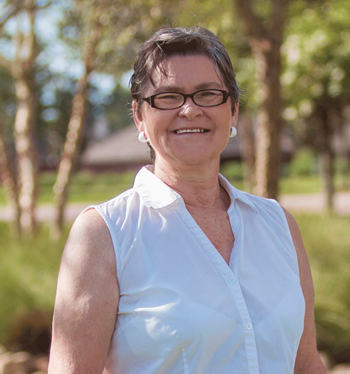Walking her own Path
For Jennifer, a 63-year-old retiree, the discomfort in her left knee began as an occasional ache that became a constant problem. “It started four to five years ago when I was working as a dialysis technician,” Jennifer says. “I was doing a lot of bending and lifting, and I thought that was probably making my knee ache. Eventually, however, the knee hurt all the time. I would have to rest when walking. It felt like the bones were rubbing together.”
Jennifer visited Jonathan Foret, M.D., orthopedic surgeon at CHRISTUS Ochsner St. Patrick Hospital, to learn about options for pain relief. Imaging confirmed Jennifer’s suspicion: the cartilage in a portion of the joint was gone, leaving the bones with no cushioning between them. Over the next several months, Dr. Foret tried several different treatments in the hope of mitigating Jennifer’s discomfort. He repaired a torn meniscus in the knee, injected the joint with corticosteroids and gel, and repeatedly drained fluid from the knee. However, none of the treatments made a lasting difference.
Partial Knee Replacement
By late last year, it was clear to both Dr. Foret and Jennifer the time had come to try a different approach. Dr. Foret suggested partial knee replacement using Mako™ robotic-arm assisted technology, a leading-edge surgical system noted for its ability to make certain joint replacement procedures more precise and less burdensome for patients. For more information about Mako™, see “Planning for Precision.” “Good candidates for Mako™ partial knee replacement are patients who have arthritis or degenerative changes in the knee that are isolated to a single compartment,” Dr. Foret says. “The goal is for the implant to last for the rest of the patient’s life.” Prior to the procedure, Dr. Foret took a computed tomography (CT) scan of Jennifer’s knee.
“I used a model created from this image to implant the prosthetic components digitally onto the knee and get an idea of their size and positioning,” Dr. Foret says. “The benefits of Mako™ partial knee replacement lie in the accuracy of the implant placement and the less invasive nature of the way the robot resurfaces the bone compared with having to cut it,” Dr. Foret continues. “Partial knee replacement tends to feel quite natural to patients compared with total knee replacement because the surgeon simply resurfaces two bones and doesn’t disrupt any ligaments.”
Complete Pain Relief
Dr. Foret performed partial replacement of Jennifer’s knee and the surgery went smoothly, and Jennifer returned home two days later. A month of in-home physical therapy helped her build strength and range of motion in the joint. The difference in how the knee feels has been remarkable. “Within three weeks to a month after surgery, my pain level was at least 80 percent less than it was before the procedure, and now I have no pain,” Jennifer says. “I can do just about anything I want to do. My whole experience, from working with Dr. Foret to receiving care from the nurses in the hospital, was fantastic. Anyone who has the opportunity to have robot-assisted orthopedic surgery at CHRISTUS Ochsner St. Patrick should take it. You can expect good results.”

